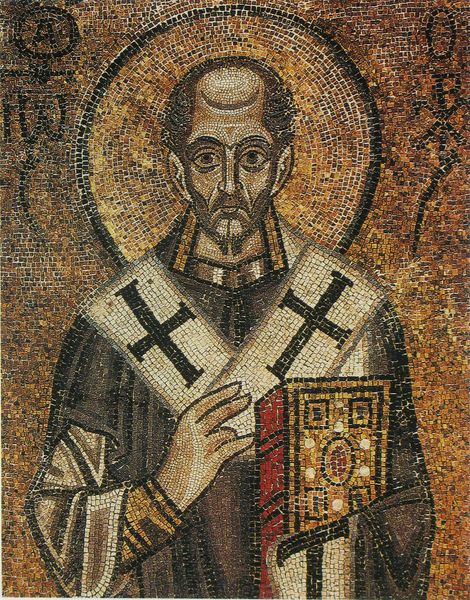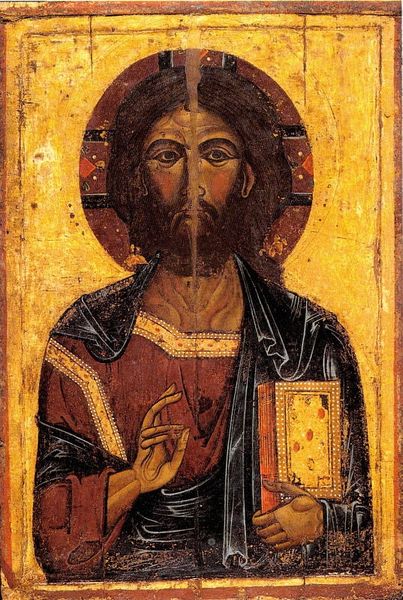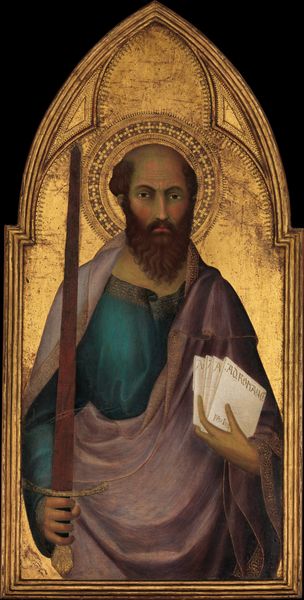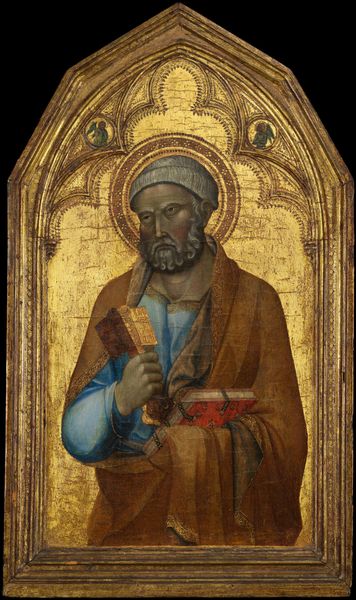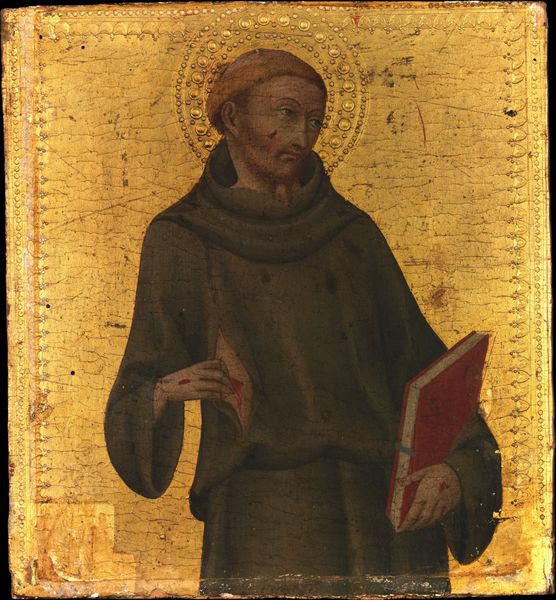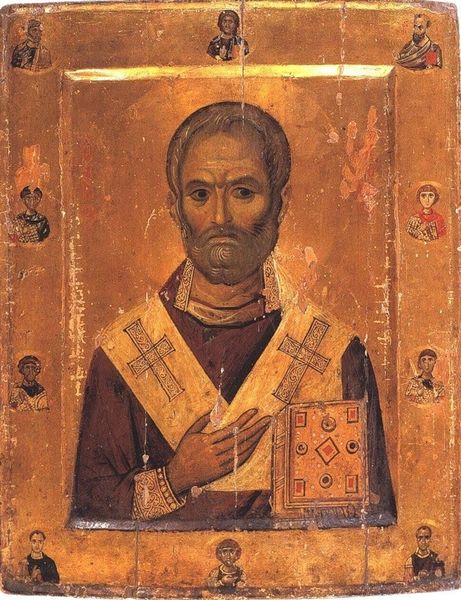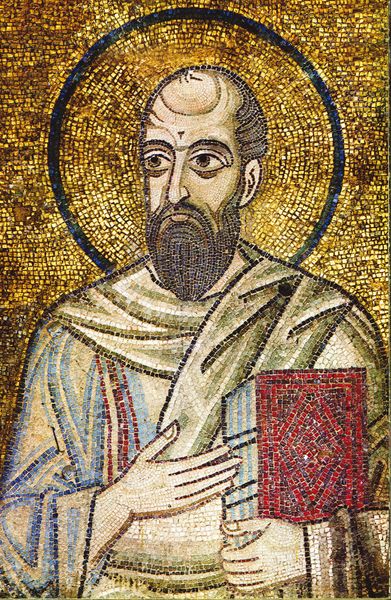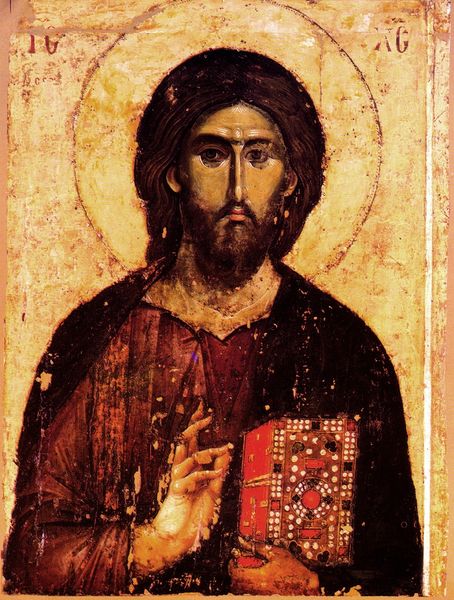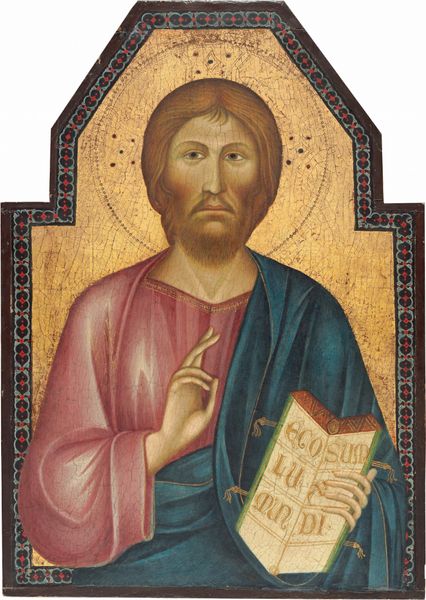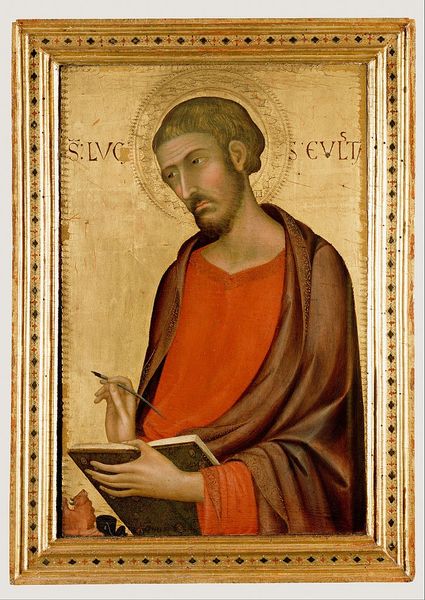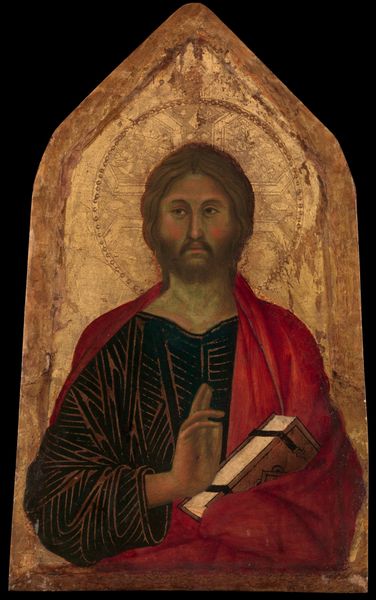
tempera, painting
#
portrait
#
byzantine-art
#
medieval
#
tempera
#
painting
#
figuration
#
oil painting
Dimensions: 145 x 94 cm
Copyright: Orthodox Icons,Fair Use
Curator: Right, let's dive into this striking piece. What we have here is a tempera painting, “Saint Nicholas,” dating back to around 1200. It resides in the Tretyakov Gallery in Moscow and represents a classic example of Byzantine art. Editor: Well, my initial gut reaction? It’s intense. There’s something so direct in that gaze. Not aggressive, more…knowing. The colours, too, have this aged, almost bruised quality about them that pulls you in. It feels both ancient and deeply present. Curator: Absolutely, there’s an arresting quality. Nicholas is depicted in the traditional iconic style, with the deliberate use of flattened perspective and stylized features, and holding the Gospel book. Notice the deliberate lack of naturalism—it's about conveying spiritual truth rather than photographic reality. How do you read his presentation here in terms of its messaging? Editor: I'm seeing a figure embedded in history, not just in a religious sense but in a temporal one. The use of gold leaf, though common in Byzantine art, adds to the layered experience: who had access to this image? Who prayed before it? What socio-economic currents does the creation and maintenance of a gilded, embellished work such as this speak of? And who were the other figures surrounding Nicholas? Are they other Saints or those who aided in production? These are things that jump out at me! Curator: Good eye! That is exactly what one must note when taking it all in. It also showcases the use of the icon as an intercessory object, not merely as a portrait. It encourages an active relationship between the viewer and the depicted saint. How do you experience that? Editor: The positioning is everything here, right? I'm thinking of that active relationship as one that mirrors other historical contexts: portraitures of Kings in court who use their visage to exude dominance. Here, the face is elongated, and dark shadows abound, not in an unappealing way, of course, but more so as to present the gravity of one's spiritual responsibilities in relation to earthly sins. There’s a responsibility and perhaps a burden. What do you think? Curator: I find it incredibly compelling. There's something profoundly human in this holy image. I can almost sense the weight of responsibility in those eyes. What resonates is its enduring power, transcending centuries to still speak to something essential within us. Editor: Indeed. And when we look at a piece like this, we are never just looking at pigment and panel. We are face-to-face with history and our shared human heritage of belief, struggle, and creation.
Comments
No comments
Be the first to comment and join the conversation on the ultimate creative platform.
